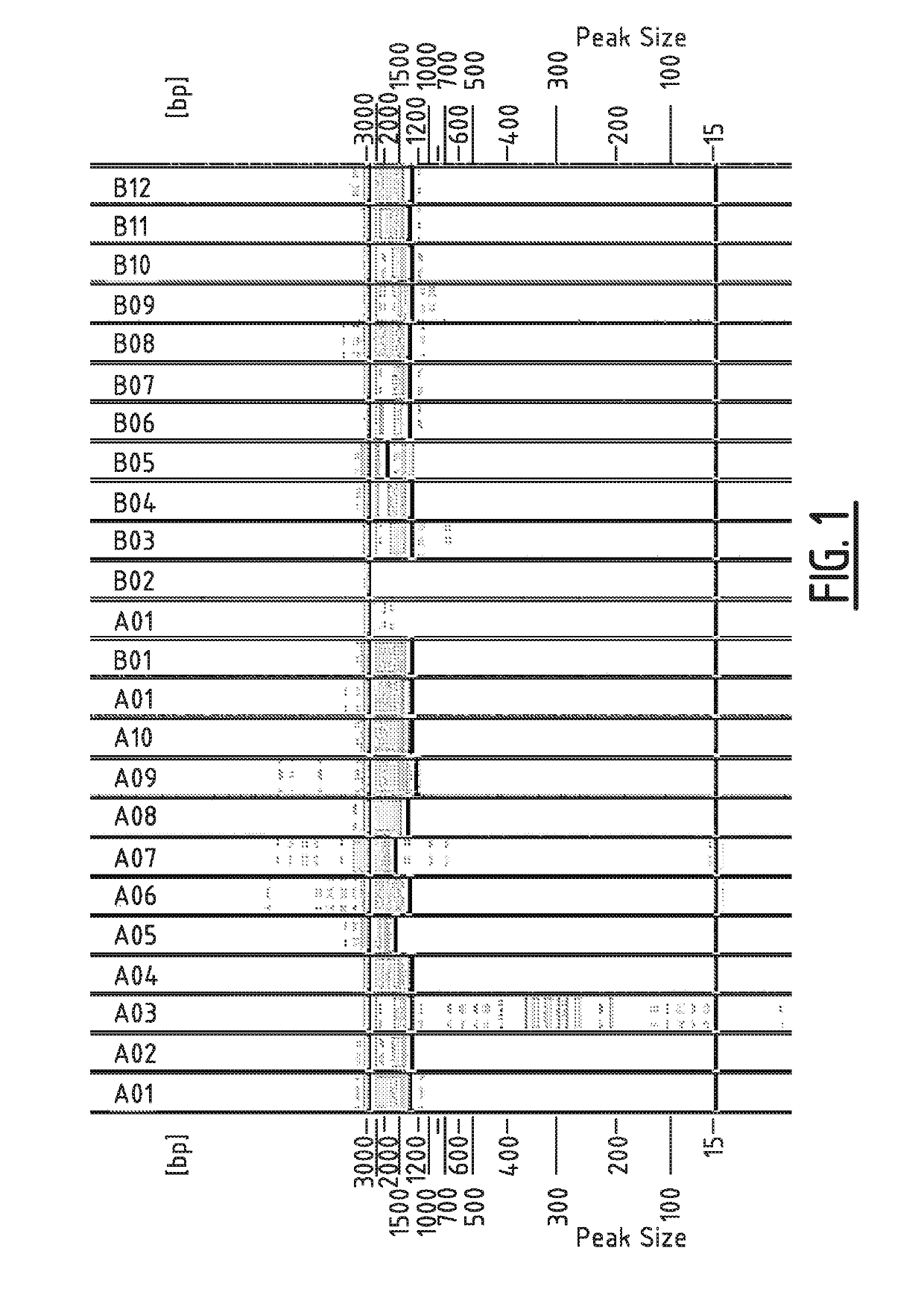Method for modifying the resistance profile of spinacia oleracea to downy mildew
a technology of spinacia oleracea and resistance profile, which is applied in the direction of angiosperm/flowering plant, biochemistry apparatus and processes, plant peptides, etc., can solve the problems of economic destruction, previously resistant spinach cultivars can again become susceptible to the fungus, and serious threat to the productivity of the spinach industry
- Summary
- Abstract
- Description
- Claims
- Application Information
AI Technical Summary
Benefits of technology
Problems solved by technology
Method used
Image
Examples
example 1
Testing for Resistance to Peronospora farinosa f. sp. spinaciae in Spinach Plants
[0179]The resistance to downy mildew infection was assayed as described by Irish et al. (2008; Phytopathol. 98: 894-900), using a differential set. Spinach plants of the invention were sown along with spinach plants from different other genotypes (see Table 1) in trays containing Scotts Redi-Earth medium, and fertilized twice a week after seedling emergence with Osmocote Peter's (13-13-13) fertilizer (Scotts). Plants were inoculated with a sporangial suspension (2.5×105 / ml) of a pathogenic race of Peronospora farinosa f. sp. spinaciae at the first true leaf stage. In this manner, 16 officially recognized pathogenic races were tested, as well as pathogenic isolate US1508 (as shown in Table 1). Peronospora farinosa f. sp. spinaciae isolate US1508 has been reported to the NAK Tuinbouw, Sotaweg 22, 2371 GD Roelofarendsveen as a candidate for official denomination as a new Peronospora farinosa f. sp. spinaci...
example 2
Identification of WOLF Alleles That Confer Resistance to Peronospora farinosa f. sp. spinaciae in Spinach
[0183]A large number of genetically different spinach plants was phenotypically tested for resistance to various pathogenic races and isolates of Peronospora farinosa f. sp. spinaciae, using the assay described in Example 1. Genomic DNA was subsequently isolated from plants that showed resistance to one or more pathogenic races or isolates. The goal of this experiment was to identify one or more WOLF alleles that are responsible for the resistance in those spinach plants. Table 2 gives an overview of the plants that were used in this experiment.
[0184]The isolated genomic DNA was used in polymerase chain reactions (PCR), using forward primer ACAAGTGGATGTGTCTTAGG (SEQ ID No:1)and reverse primer TTCGCCCTCATCTTCCTGG (SEQ ID No:2) for the identification of alpha-type WOLF alleles, and forward primer TCACGTGGGTTGTGTTGT (SEQ ID No:3) and reverse primer TTCGCCCTCATCTTCCTGG (SEQ ID No:2) ...
example 3
Modifying a Spinach Plant's Resistance Profile to Peronospora farinosa f. sp. spinaciae Using a Nucleic Acid Construct
[0207]Spinach plants of variety Viroflay are transformed with a number of different nucleic acid constructs, each construct comprising one or more copies of a WOLF allele. The WOLF alleles used in this experiment have been obtained from different spinach plants. The alleles were identified after sequencing the genome of a collection of spinach plants, and searching therein for alleles that have all characteristics of an alpha- or beta-type WOLF allele, as defined elsewhere in this application.
[0208]For insertion into a nucleic acid construct, the genomic sequences of WOLF alleles are PCR-amplified from the genome of the spinach plants, along with their endogenous promoter sequences. For most of the alleles the promoter is defined as a region of 2000 bp upstream from the ATG start codon of the gene. Table 3 gives an overview of the nucleic acid constructs that are use...
PUM
| Property | Measurement | Unit |
|---|---|---|
| resistance | aaaaa | aaaaa |
| size | aaaaa | aaaaa |
| temperature | aaaaa | aaaaa |
Abstract
Description
Claims
Application Information
 Login to View More
Login to View More - R&D
- Intellectual Property
- Life Sciences
- Materials
- Tech Scout
- Unparalleled Data Quality
- Higher Quality Content
- 60% Fewer Hallucinations
Browse by: Latest US Patents, China's latest patents, Technical Efficacy Thesaurus, Application Domain, Technology Topic, Popular Technical Reports.
© 2025 PatSnap. All rights reserved.Legal|Privacy policy|Modern Slavery Act Transparency Statement|Sitemap|About US| Contact US: help@patsnap.com


